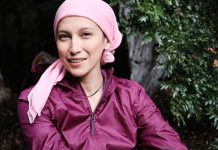
Recent research has shown that breast tissue contributes to older women’s higher risk of developing breast cancer.
The study involves researchers from Norway, Switzerland, and the United States.
Previous studies have shown that, as women age, the composition of their breast tissue changes.
This is because multipotent progenitors—cells with the ability to develop into more than one type of cell—build up in the body.
Researchers hypothesized that accumulation of those progenitors is one of the reasons why breast cancer risk increases with age.
The team looked at cells from 56 women, and they were able to show that the age-related luminal cells were derived from defective luminal progenitors that also accumulate with age.
The team was also able to identify a protein signature that emerges in aging breast cells.
They believe it may be directly related to older women’s increased susceptibility to breast cancer.
Breast tissue does not only affect breast cancer risk in healthy women, but also affect cancer risk in breast cancer survivors.
For example, in a recent study, researchers from The University of Texas find that breast cancer survivors with dense breast tissue have higher risk of developing disease in the contralateral breast.
The study is among the first studies to find the link between breast density and contralateral breast cancer.
The estimated 10-year risk for women with breast cancer developing contralateral breast cancer can be as low as 2%, and as high 40%.
In the study, the researchers identified 680 stage I, II and III breast cancer patients.
Women with an additional diagnosis of metachronous contralateral breast cancer and women who had not developed the disease were both enrolled.
Contralateral breast cancer is breast cancer in the opposite breast diagnosed more than six months.
The researchers categorized each patient’s breast density by mammogram reading, assessed at the time of first diagnosis, as “non–dense” or “dense”.
Among the women with contralateral breast cancer, 39.3%were classified as having non-dense breast tissue and 60.7% as having dense breast tissue, compared to 48.3% and 51.7%, respectively, in the women without the disease.
After adjusting for known breast cancer risk factors, the researchers found almost a much higher risk of developing contralateral breast cancer in breast cancer survivors with dense breasts.
The researchers suggest a big challenge to manage this patient population is trying to counsel women appropriately on their risk of developing breast cancer in the other breast.
In the long-term, the team hopes to use this tool to counsel patients on their personal risk and their options for treatment and surveillance.
The studies are published in the journal Cancer and Cell Reports.
Copyright © 2018 Knowridge Science Report. All rights reserved.



